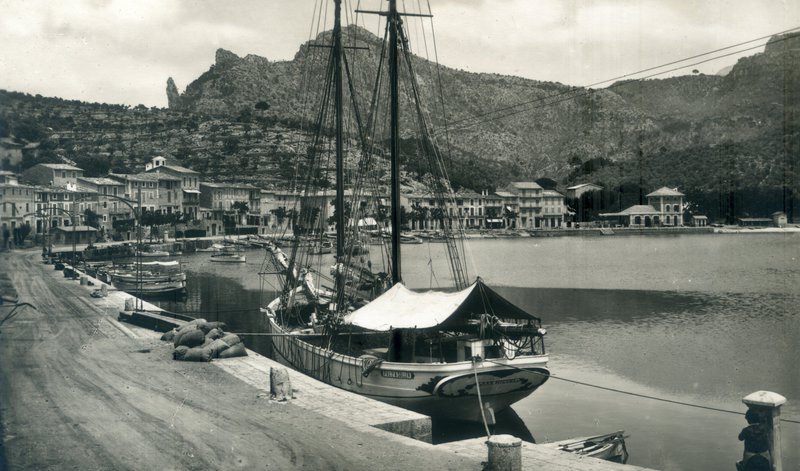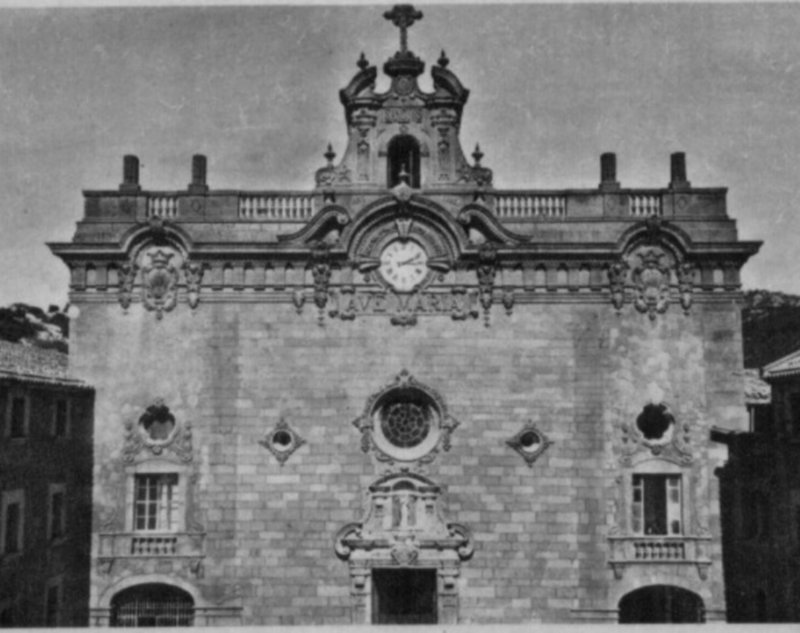A quiet pilgrimage
A South African born writer takes us along with her on a pilgrimage to Mallorca's sacred monastery of Lluc
Women Travellers in Catalan Lands
We crept through the narrow streets of Pollensa town, only a shade less desolate than usual in the bright morning, and immediately beyond seemed to traverse one of those old heroic pictures of classic landscape, as we shot under the monastery of Nuestra Señora del Puig towering up on her high rock. The roundabout road on the flat lay through the familiar Puebla and Inca, and the very beautiful unfamiliar village of Selva, where the colour of the lemons seemed more than usually lovely against the old ivory houses; then it climbed up and up through steep, washed terraces on the other side of those peaks that we had watched appearing and disappearing from the boat in Pollensa Bay.
Lluch lies not in a cup, but in a saucer, among the very peaks. It lies, that is, not in a steep close hollow, but in a plateau, swinging like a great, gently-sagging cloth between the tops of the mountains. It was beautiful, through very unexpectedness, to find it not a little steep building clinging to a windy apex, but a great wide settlement. The inner walls were reminiscent half of castle, half of farm-house, and the arched stone gateway, admitting to the solid dignified façade of the monastery, looked out through a row of trees upon a vast courtyard of cobbles and grass, with a fountain in the middle and low buildings lining the sides. Since it was only midday of the vigil, we were the first pilgrims to arrive. [...]
The monastery was also a guest-house on a grand-scale, making provision for pilgrims journeying from the limits of the island. The long building facing the court was entirely taken up with guest-rooms, and one side of the courtyard occupied with an arcade of very poetical billets for guest-donkeys or mules. Opposite them were the dwellings of what population the monastery supported, with two tiny shops like tuck-shops, in the care of orthodox spectacled old women, and filled with the orthodox ancient edibles in glass jars. Behind the guest-house was a beautiful inner court, with a hedge and garden, recalling the court of an English college. There was no sign of human habitation anywhere, only a savoury smell of frying and onions which indicated an arroz and drove us out rather enviously to our self-brought lunch on the hill-side.
It is beautiful to sit among the peaks that one has watched pricking the sky from below, and beautiful to see how the very last earth clinging precariously to the rock still persistently teems and flowers. Every brown handful in a crack was a tiny fresh garden, blest often with violets or just-budding white cyclamens, and ilex trees seemed everywhere to spring out of crevices in the sheer rock. The familiar grey rock and green grass, olive and ilex, took a strangeness from the peaks themselves, for the sides of these were everywhere by a geological freak mathematically scored in straight deep grooves. It was exactly as if a giant had worked painstakingly over every face of upright rock on the landscape with an electric drill. [...]
In the late afternoon, apprised of human occupation by the sight of a very old man in a goat-skin and a very young boy in a sailor-suit and a bouquet of violets, we sought out a little round lay sacristan with keys and told him our plans. He seemed delighted to entertain us, and gave us bed-coverings out of a room where there were larger presses and more linen than the greediest house-wife ever dreamed. He also insisted that we should need a guide and a mule for Soller, and undertook to produce them both. In the evening we ate our meal in the fonda of the monastery, in company with a troop of boy cyclists and waited on by the second faultlessly beautiful woman we had seen in the island. She was not fair, like our Iphigenia, but of pure dark colouring with curved features, one of those in whom a touch of Africa seemed to have survived through the centuries. She moved gracefully, shawled and hooded, round the bare table, and lent a biblical beauty to the meal. Afterwards we walked again in the divine, keen air among the strange peaks and the olives over which the moon was flinging a beauty holier and older than biblical, and heard the frogs in the stillness instead of the sheep-bells. Over the pure uplifted landscape with its night scents and sounds was the still sacredness of a vigil; only no feast could dawn in beauty fitting to succeed it.
Ada May Harrison
Born in Port Elizabeth (South Africa), Ada May Harrison (1899-1958) received a sound education that prepared her well for her future writing career. Her father, a merchant, and her mother, a teacher, first schooled her in South Africa but afterwards sent her to London and finally to Newnham College, in Cambridge, where between 1918 and 1921 she studied modern and medieval literatures. After graduating she took some teaching posts, did some research in Italy and published her first book, Some Tuscan Cities (1922). In July of 1924 she married the artist Robert Austin, whom she had met earlier in Italy, and they returned to England in 1926. They settled in a house on Chiswick, overlooking the Thames, and eventually would have a son and two daughters. Harrison never stopped writing and on several occasions even collaborated with her husband, who beautifully illustrated some of her books. In addition to producing newspaper articles and collaborating in the radio programme Woman's Hour, she found time to publish two novels, five children's books and the travel books Some Umbrian Cities (1925), A Majorca Holiday (1927) and There and Back (1933). Her book on Mallorca, a common outcrop of the post-World War I passion for the Mediterranean, contains descriptive chapters on all the major sights, including the renowned monastery of Lluc: the sacred landmark at the represents for the Mallorcans what Montserrat means to the Catalans.




